Comprehensive Guide to Carpet Moth Identification and Treatment
Understanding Carpet Moths: Identification and Life Cycle
Introduction to Carpet Moths
Carpet moths, often invisible threats to our home's comfort and aesthetics, are not just any pest. These small but destructive insects, primarily the larvae, feed on the keratin found in natural fibres, making woollen, silk, and other organic fabric carpets their ideal breeding grounds. Understanding what carpet moths look like is the first step in combating them.
Adult moths are characterized by their small size and dull colouration, which allows them to blend seamlessly into their surroundings.
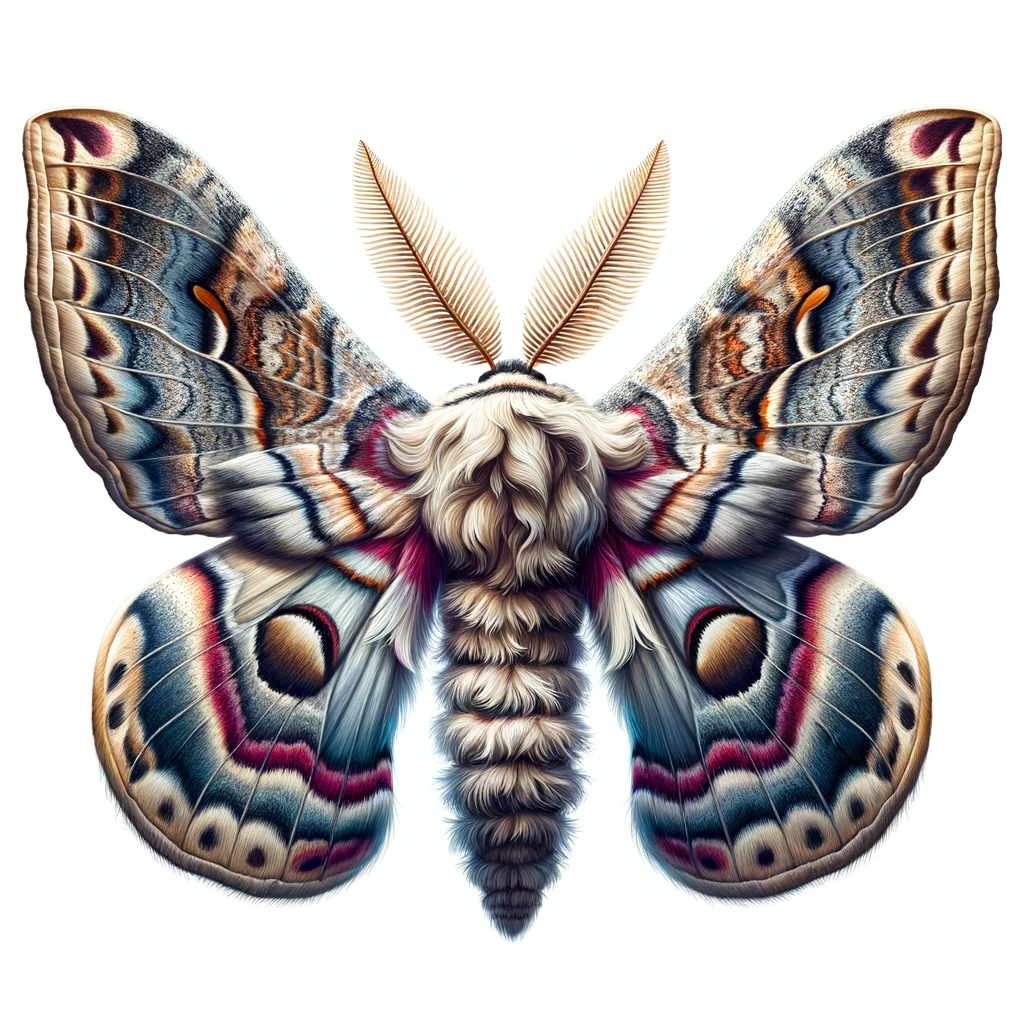
The Lifecycle of Carpet Moths
The lifecycle of carpet moths plays a crucial role in understanding how these pests propagate within our homes. Starting from tiny, almost invisible eggs laid within the carpet's fibres, to larvae that voraciously consume organic material, understanding each stage is vital. The larvae stage is particularly destructive, as this is when the most damage is done to carpets and rugs. After feeding and growing, these larvae then cocoon into pupae before emerging as adult moths, ready to start the cycle over again. Identifying the presence of carpet moth eggs or larvae early can significantly reduce the potential damage caused.
Carpet beetle larvae, often referred to as 'woolly bears' due to their fuzzy appearance, are the primary cause of damage. These larvae feed on a variety of animal-based materials, including wool, silk, leather, and feathers. Recognizing the signs of larvae, such as shed skins and damaged materials, is crucial for early detection and control.
Effective Carpet Moth Treatments
Choosing the Right Carpet Moth Killer
When battling a carpet moth infestation, selecting an effective carpet moth killer is crucial. There are numerous products on the market, from sprays and powders to traps and natural alternatives.
'Rug remedy carpet moth killer' is one such product, formulated specifically to target and eliminate carpet moths and their larvae without damaging the carpet itself.
It's essential to follow the product's application instructions carefully to ensure safety and effectiveness.
Professional Carpet Moth Treatment Options
For severe infestations, professional carpet moth treatment may be necessary. Pest control experts can offer more potent solutions and strategies to eradicate carpet moths. These may include deep cleaning of the affected areas, application of industrial-strength insecticides, and ongoing monitoring to prevent reinfestation. Professionals can also offer tailored advice on maintaining a moth-free environment in the future.
Common Carpet Pests Sections
Prevention Strategies for Carpet Moth Infestations
How to Moth-Proof an Oriental Rug for Storage
Preventing carpet moths begins with understanding how to effectively moth-proof your precious oriental rugs, especially during storage. Cleanliness is paramount; moths are attracted to dirt, perspiration, and food remnants that can get trapped in the fibres. Before storage, thoroughly clean your rug.
Use specific moth repellents like mothballs or natural alternatives such as lavender sachets, which deter moths without damaging the rug’s fibres.
Ensuring your storage area is dry and well-ventilated will also discourage moth infestation, as these pests thrive in damp, undisturbed environments.
Selecting Moth-Resistant Carpet Materials
When selecting new carpets or replacing old ones, consider materials that are less attractive to moths. Synthetic fibres, for instance, do not provide the natural keratin that moths seek, but remember, they might not offer the same aesthetic or feel as natural fibres.
For those who prefer natural options, wool treated with moth-resistant chemicals can offer a compromise between attractiveness and practicality. Always consult with a reputable dealer to understand the treatments used and ensure they are safe for home environments.

Repairing Moth Damage: From Identification to Restoration
Identifying Moth Damage on Carpets and Rugs
Moth damage often appears as irregular holes in carpets or rugs, especially in less trafficked or dark areas. If you notice such damage, it's crucial to inspect for larvae or silken tunnels, which indicate an active infestation. Early identification can prevent further damage and make restoration efforts more effective.
Professional Restoration Techniques for Moth-Damaged Rugs
For valuable or antique rugs, professional restoration may be the best course of action. Expert restorers can reweave damaged areas, matching the original patterns and colours closely.
This process, while often costly, can restore the rug’s beauty and extend its life significantly. Always seek multiple opinions to ensure the best approach for your specific piece.
Cleaning Methods
Advanced Carpet Maintenance Strategies
Advanced carpet maintenance goes beyond regular cleaning and involves strategies that ensure the longevity and durability of your carpets. Using steam cleaners for carpets is a highly effective method for deep cleaning and sanitizing. This section provides in-depth information on how to use these tools effectively, along with tips and tricks for keeping your carpets looking and feeling new.
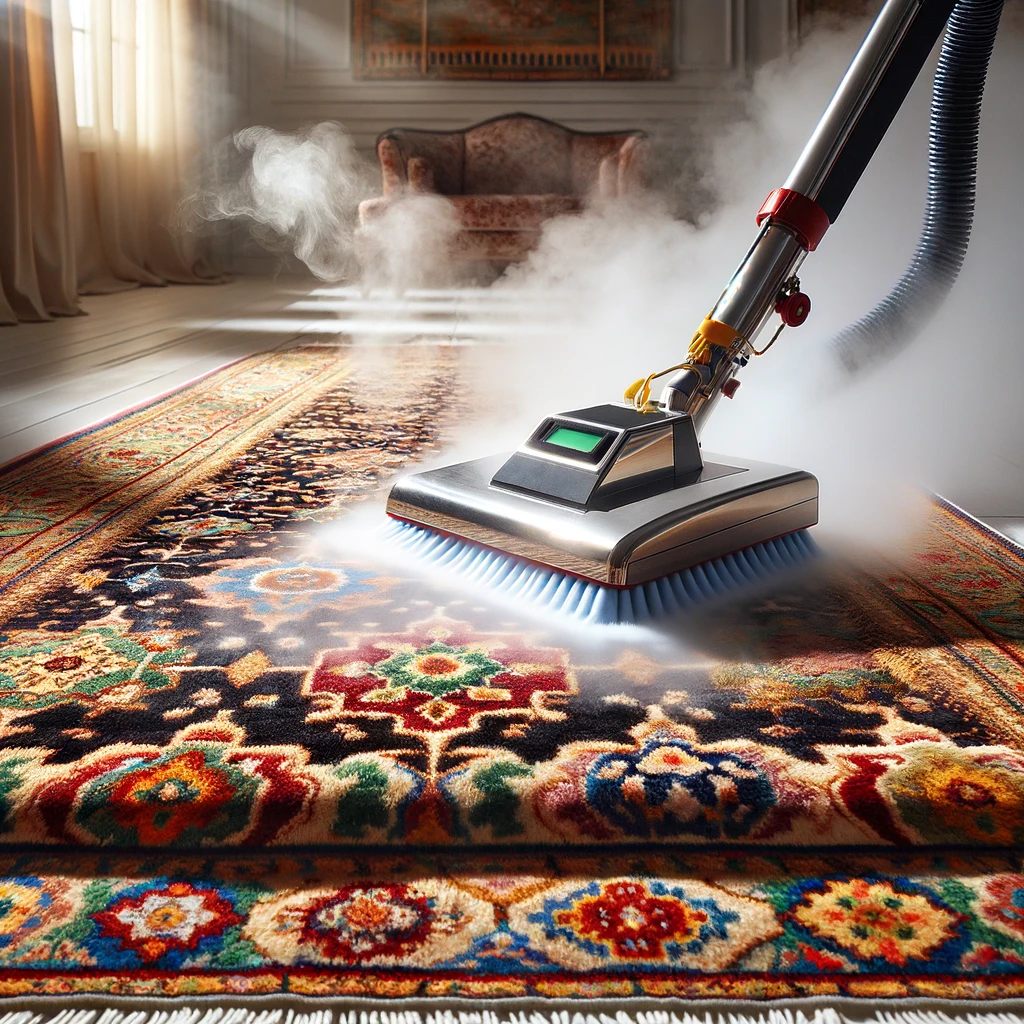
Steam Cleaning
Steam cleaning for Persian rugs involves a gentle yet effective method of deep cleaning, removing dirt and allergens without damaging delicate fibers, preserving beauty and longevity.
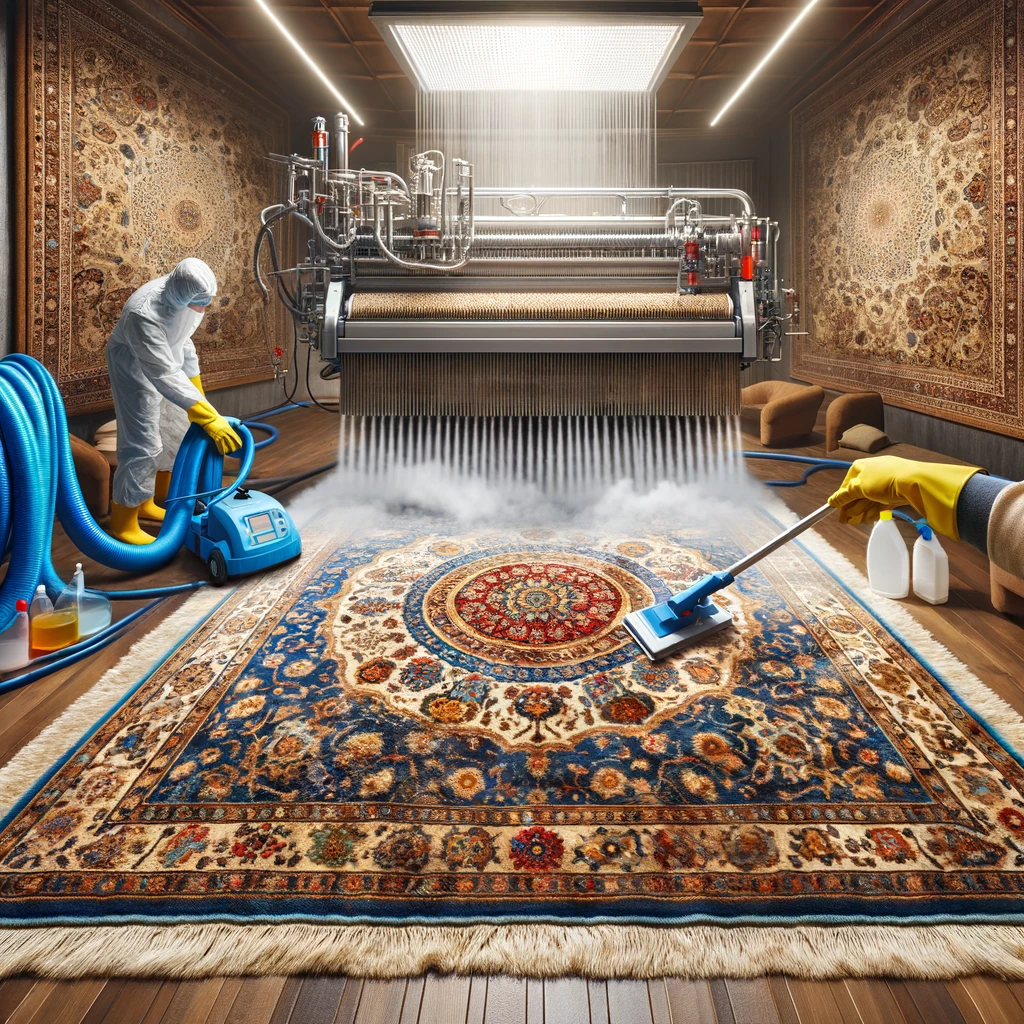
Deep Cleaning
Deep cleaning Persian rugs requires specialized techniques to remove deeply embedded dirt and restore their vibrant colors, ensuring the preservation of their intricate designs and durability.
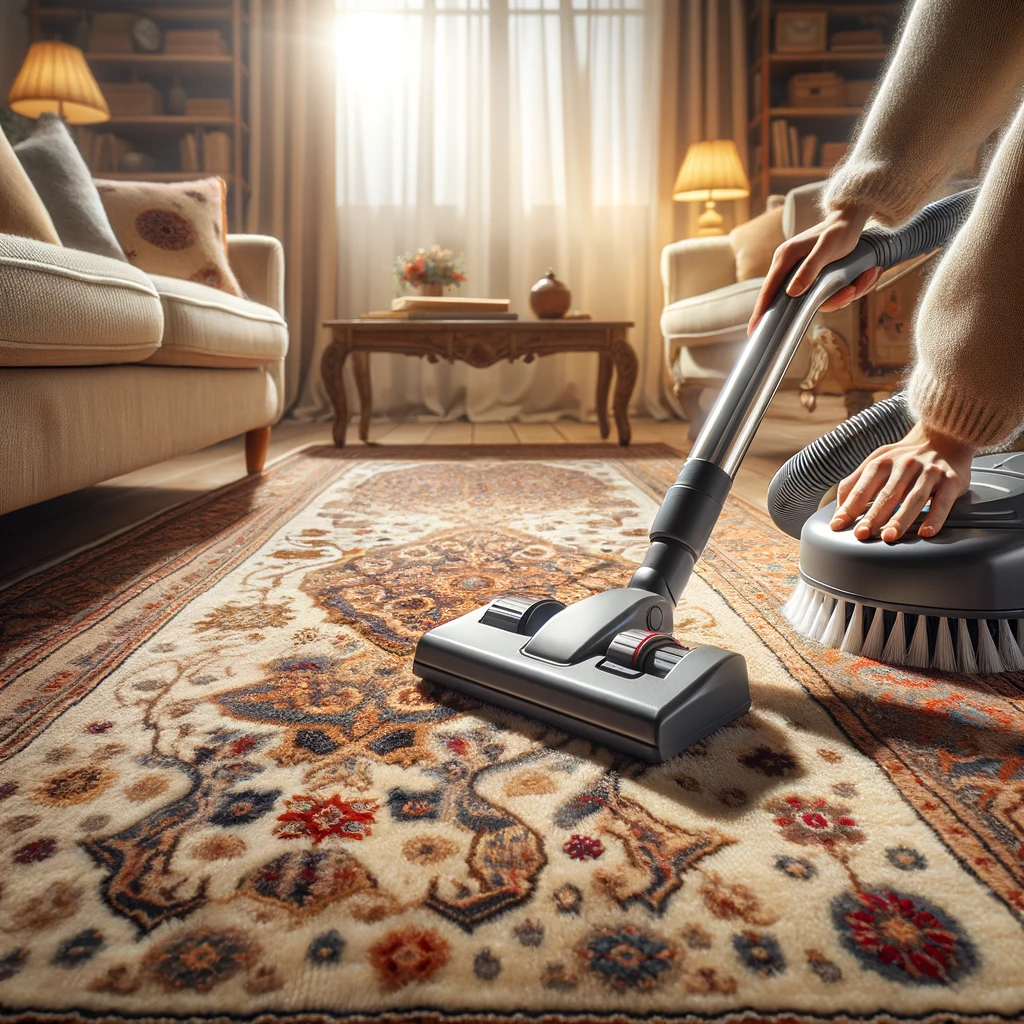
Vacuum Cleaning
Vacuum cleaning for Persian rugs focuses on removing surface dust and debris gently, protecting the rug's intricate patterns and delicate fibers from wear and damage.

Stain Removal
Stain removal for Persian rugs addresses common damage issues like spills and spots, using careful techniques to preserve colors and fibers while eliminating blemishes.
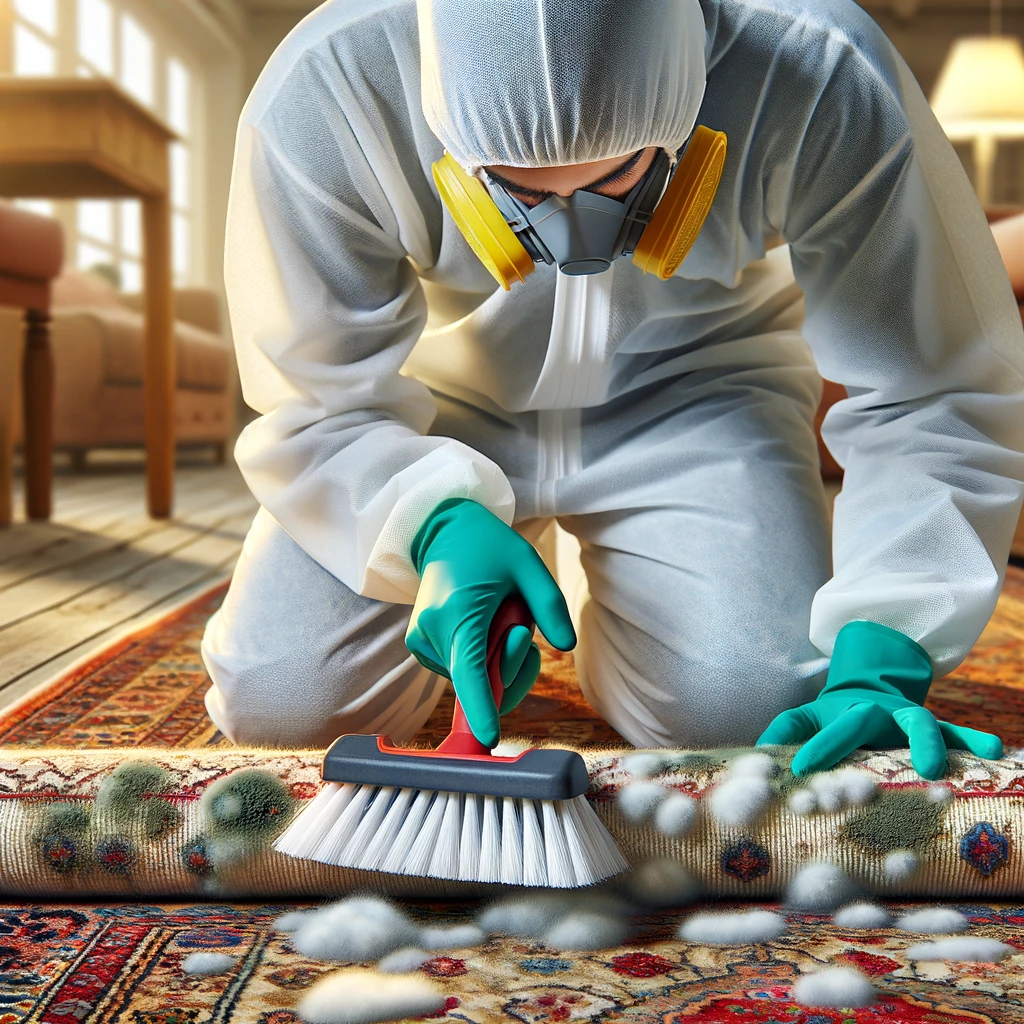
Mold Removal
Mold removal for Persian rugs tackles common damage issues such as mildew and fungus, employing safe methods to eradicate growth and restore rug health without harm.
Joe Rugs - Carpet Expert
Hello! I'm Joseph Rugs, the founder of CarpetJoe.com and your guide through the intricate world of carpets. Born and raised in London with a deep-rooted passion for art and culture, I've explored the globe to bring the rich tapestry of carpet weaving right to your screen. My academic background in arts and humanities from Oxford has fueled my curiosity, leading me to uncover the stories behind every knot and weave. As a family man, my adventures are shared with my loved ones, enriching our lives with every piece of art we encounter. Join me as we explore the beauty and craftsmanship of carpets together.
Carpet Repair & Restoration Guides
Carpet damage can range from minor issues like small burns or stains to more significant problems such as large tears or widespread wear.
Identifying the type of damage is the first step in determining the most suitable repair method.
Master carpet repair with our guides. Learn about fixing burns, holes, and wear in carpets and rugs, including DIY patch repairs and professional restoration tips.
Frequently Asked Questions
Carpet moths are small, with a wingspan of about 1418 mm. They have a buff or golden color with small spots or streaks.
Carpet moth eggs are tiny, oval, and creamywhite, making them difficult to see without magnification.
A carpet moth is a type of moth whose larvae feed on keratin in natural fibers, causing damage to carpets, clothing, and upholstery.
To get rid of carpet moths, thoroughly clean infested areas, use targeted insecticides, and consider professional pest control services for severe infestations.
Small areas of damage can be repaired by reweaving or patching by a professional. Severe damage may require more extensive restoration.
Clean the rug thoroughly, use moth repellents, and store in a dry, well-ventilated area, ideally wrapped in breathable materials.
Carpet moths are attracted to natural fibres and can enter homes through open windows or on infested items.
Yes, with diligent cleaning, proper use of insecticides, and preventive measures, it is possible to eliminate carpet moth infestations.
Carpet moths themselves are not harmful to humans, but their presence indicates an infestation that can damage textiles.
Moths prefer natural fibres like wool and silk and are less attracted to synthetic materials.
Look for signs of damage, such as bare patches or holes, and the presence of larvae or silken cocoons.
Clean the rug and affected area thoroughly, apply appropriate insecticides, and consider professional pest control.
Regular vacuuming can help remove eggs and larvae, but may not completely eliminate an infestation without additional measures.









